Most electrical inspectors never evaluate completed residential and commercial buildings with respect to energy efficiency provisions adopted and enforced by a state or jurisdiction. Why? Electrical-plan review and inspection do not typically involve energy provisions and, more significantly, most electrical inspections occur before energy-saving measures are even installed. These final inspections are typically the responsibility of the building inspector. However, while the roles of building and electrical inspectors are different, they are complementary. Understanding these roles and the code requirements they involve furthers the primary goal of both electric and energy codes—the construction of safe and energy-efficient buildings.
When energy codes and standards are adopted, implemented, and enforced, they improve the lives of Americans, not only by reducing energy consumption in buildings, saving homeowners and commercial building owners and managers money, but by decreasing society’s need for new power generation, reducing national demand for fossil fuels, and reducing the emission of environmental pollutants that affect all citizens.
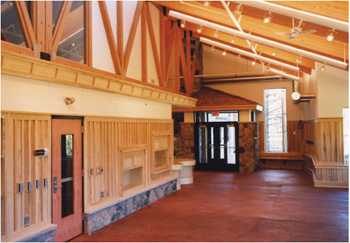
Photo 1. Hartley Nature Center, Duluth MN. The center features sustainable and environmentally preferable building materials
Future energy codes are likely to require increased attention to components traditionally inspected by the electrical inspector. As energy codes evolve, the power demands of buildings will decrease, which may require electrical inspectors to become familiar with new and changing technologies. For example, new buildings may require fewer or lower-capacity circuits, new and innovative products and equipment may appear, and lighting systems may become more complex. This article provides a brief overview of what current energy codes and standards entail and what the future may hold for building and electrical inspectors.
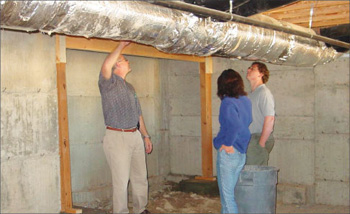
Photo 2. Richland, WA. Residential duct insulation inspection
Codes in General
Designing energy efficient buildings requires an integrated approach for selecting materials and systems for the envelope, lighting, mechanical, and electrical systems in a building. Energy codes and standards play a vital role in the marketplace by setting minimum requirements for energy-efficient design and construction in a framework that allows flexibility. The International Energy Conservation Code® (IECC) and ANSI/ASHRAE/IESNA1 Standard 90.1 specify such requirements and provide guidelines for designing both low-rise residential and commercial/high-rise buildings.
The IECC and Standard 90.1 both contain several alternative compliance methods that can be used during the design process to help the designer, engineer, contractor, and/or builder make the best energy design decisions. They outline uniform requirements for new buildings as well as additions and renovations, and specifically regulate energy consumed, primarily to provide for human comfort and for heating and cooling a building to protect its contents. The regulations impact the building envelope; heating, ventilating, and air-conditioning (HVAC) equipment; lighting and other uses of electricity; and service water-heating. More specifically, the following are covered:
- Building thermal envelope — minimum requirements for roof/ceiling, wall, and foundation insulation; and heat-loss and solar-gain characteristics of fenestration (windows, doors, and skylights)
- Lighting — maximum allowable installed wattage for interior and exterior lighting systems, as well as controls
- Electrical power — requirements related to building power distribution systems
- Heating, ventilation, and air conditioning (HVAC) — requirements covering HVAC systems, equipment, and controls
- Service water-heating — requirements relate to service water-heating equipment and controls.
Energy codes are developed under the protocols of the International Code Council (ICC), for the IECC, and the American Society of Heating, Refrigerating, and Air Conditioning Engineers (ASHRAE), for Standard 90.1. Numerous stakeholders are involved in these processes, including the U.S. Department of Energy (DOE), efficiency advocates, manufacturers, builders, researchers, and others in the building industry.
More About the IECC and Standard 90.1
The IECC is a model building energy code that is part of the ICC’s building code series. It is compatible with other ICC Codes and is written in mandatory, enforceable language, so that states and local jurisdictions can easily adopt the IECC as their overall building energy code. The IECC is revised on an 18-month cycle: a full publication of the latest revised document occurs every three years, with supplements issued in the interim.
The IECC contains energy efficiency provisions for both residential and commercial buildings. For commercial and high-rise residential construction, the IECC contains both its own requirements and a direct reference allowing compliance via Standard 90.1. The scope of Standard 90.1 includes all buildings except low-rise residential buildings (multi-family buildings three or fewer stories in height).
Each dated reversion of the IECC references a specific published version of Standard 90.1. For example, the 2006 IECC references Standard 90.1-2004. It is anticipated that the most recent published version of Standard 90.1 (2007) will be referenced by the 2009 IECC, which will not be final until after the ICC’s Final Action Hearing to be held in September 2008, in Minneapolis, and not printed until early 2009. For more information on the ICC process, seewww.iccsafe.org/news/annual/
Standard 90.1 describes how buildings must be constructed to reduce energy waste cost-effectively. It is revised and published every three years. However, anyone may propose a revision at any time. Approved interim revisions (called addenda) are posted on the ASHRAE website (www.ashrae.org) until they are included in the next published version. The standard is written in code-enforceable language, is developed under ANSI procedures, and when determined as appropriate by the U.S. Department of Energy, is required to be met or exceeded by State energy codes. This makes it appropriate for jurisdictions to incorporate the provisions of the energy standards directly into their laws or regulations. States and local governments frequently use energy standards as the technical basis for developing their energy codes.
The History of Model Energy Codes and Standards
The first published energy standard for buildings, released in 1975, was called ASHRAE 90-75. Standard 90-75 was a standard of professional practice and led to a short-lived and virtually unknown energy code called the Model Code for Energy Conservation, published in 1977.
The residential requirements in 90-75 were translated into enforceable code language in the first CABO2 Model Energy Code (MEC) in 1983 and updated with minor modifications in the next three MECs in 1986, 1989, and 1992. In 1989, ASHRAE published Standard 90.1-1989, its third version of Standard 90.1. This standard was also the basis of the first federal commercial energy code (10 CFR 434).
Users of the 1992 MEC were allowed to use Standard 90.1-1989, and the 1993 MEC required its use. The Energy Policy and Conservation Act (EPCA, as amended) required states to adopt commercial energy codes that met or exceeded Standard 90.1-1989, so the 1993 MEC was the first version of that code that met EPCA requirements.
The 1995 MEC and the 1998 IECC (the successor to the MEC) were the products of a number of code modifications. In 1999, ASHRAE released Standard 90.1-1999, a complete revision to 90.1-1989. Standards 90.1-2001, 90.1-2004, and 90.1-2007 were subsequently upgraded and published on ASHRAE’s standard three-year schedule.
As a point of reference, electrical codes with their focus on life safety issues have been around a lot longer than energy-focused codes. The first electrical code requirements were established through the National Fire Protection Agency (NFPA) in 1896. Although life safety still takes precedence over energy considerations, the prominence of energy and associated environmental concerns today means that both sets of provisions must be made to work in concert to achieve the goals of both.
About EPCA
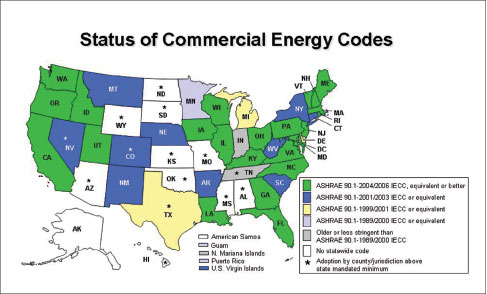
Figure 1. Status of State Commercial Energy Codes, May 2008
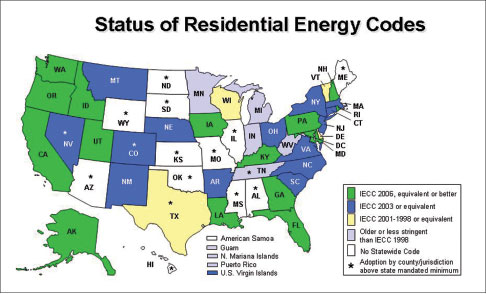
Figure 2. Status of State Residential Energy Codes, May 2008
EPCA established a role for DOE in evaluating whether successive revisions to the 1995 Model Energy Code (succeeded by the IECC) and Standard 90.1-1989 (succeeded by subsequent releases of Standard 90.1) would improve energy efficiency in residential and commercial buildings, respectively. If DOE determines that a revised model code would improve energy efficiency relative to its predecessor, it is required to publish its determination in the Federal Register. Each state then has two years to review the energy provisions of its residential or commercial building energy code. For residential buildings, a state must determine whether it is appropriate to update its energy code. If it is inappropriate to do so, it must inform the Secretary of Energy as to why it is inappropriate to do so. For commercial buildings, a state is required to update its commercial code to meet or exceed the provisions of the most recent Standard 90.1, for which a positive determination, by DOE, has been made.
Why Are the History of Codes, EPCA, and the Role of the States Important?
States may adopt a national model code for either or both residential and commercial buildings or develop and adopt state-specific codes. The adoption process varies from state to state. Currently, only a few states automatically adopt newer model codes upon their release, so most new code adoptions will follow a prescribed legislative or regulatory process. Today, fifteen U.S. states have adopted the most recent version of the IECC (2006) or equivalent for residential buildings, and twenty-two states have adopted Standard 90.1-2004 or equivalent for commercial and high-rise multifamily buildings(see figures 1 and 2). For more information on the status of state codes, visitwww.energycodes.gov.
It is important for all stakeholders to know that a new code is coming and understand what is required. A bit of upfront preparation can save hours of aggravation and misunderstanding later. Many states or jurisdictions start this education process several years in advance of a code change—often before the code is formally adopted. The more publicity and training on the new code, the more it will be accepted and complied with the first time around. During implementation, the adopting jurisdiction(s) will prepare building officials and inspectors to enforce the new code and to prepare the building construction community to comply with the new provisions. Inspectors are ideally positioned to prepare the construction industry for these changes and smooth the transition.
Adopting an energy code or any other code and establishing an effective date is one matter; enforcing it is quite another. Apart from effective enforcement, there is little assurance that new construction will be designed and built to the new code’s requirements. Enforcement is critical to securing energy savings and ensuring safe buildings. In practice, enforcement strategies vary according to a state or local government’s regulatory authority, resources, and manpower. But everyone can benefit from knowledge of how the code-enforcement infrastructure maps onto the important elements of an energy efficiency code:
- During plan review: building plans, blueprints, CAD drawings, and energy code compliance certificates
- During product, material, and equipment specifications review: insulation, fenestration, lighting, mechanical specifications
- During testing and certification review: referenced supporting data
- Compliance calculation review: verifying energy code compliance data is accurate against construction documents to-scale
- Building inspection during construction: inspection checklists, certifications of installed insulation provided by installers, air sealing, duct construction and insulation, HVAC and lighting systems and controls
- During evaluation of materials substituted in the field: revised plans, specifications, and energy code compliance certifications
- During building inspection immediately prior to occupancy: review of prior failed inspections, final air sealing of the building envelope, and installed equipment verification
The Future of Energy Efficiency Codes
DOE and ASHRAE have joined together to make a tremendous improvement in the commercial model energy codes by 2010. They are well on their way to achieving a 30% savings in Standard 90.1-2010 (relative to Standard 90.1-2004). And DOE is also working with other stakeholders to promote a 30% savings in the 2009 IECC (relative to the 2006 IECC) for low-rise residential buildings. These improvements are based on the results of research and demonstration projects and on significant advancement in key technologies.
In addition to Standard 90.1 and the IECC, there are other standards being developed to support utility and incentive programs. These standards are designed to achieve even higher levels of savings. For example, ASHRAE published a second public-review draft of its Standard for the Design of High-Performance Green Buildings Except Low-Rise Residential Buildings (Standard 189.1) March 2008. If they prove appropriate, they may form the basis of future model energy code changes.
What does all this mean for the electrical inspection community? Many requirements included or proposed for inclusion in new code revisions may affect electrical inspectors. Although there is no guarantee that these proposed changes will make it into the final versions of the code or standard, or that your state or local jurisdiction will adopt any of these codes or standards, they are becoming so commonly used in advanced design and construction that electrical inspectors would do well to be aware of them.
Standard 90.1-2007: Commercial and High-Rise Residential Multifamily Buildings
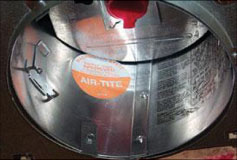
Photo 4. Recessed downlight fixture
This standard has been published by ASHRAE and the contents are final. DOE will be evaluating this standard for energy savings and if, as expected, it is found to save energy, states will be required to adopt a new commercial energy code that meets or exceeds the provisions of this standard. Under the Congressionally established schedule, states would be adopting something like this by 2010.
Features of interest to electrical inspectors include:
- Recognition of the energy-use limitation of circuit breakers and current limiters in track and busway lighting
- Revised wattage calculations for luminaires with multi-level ballasts
- Allowance of additional combinations of exterior lighting controls
- Exemption from the energy code of furniture-mounted track lighting equipped with automatic shutoff
- Clarification of exemption for lighting in spaces specifically designed for special lighting needs to address medical and age-related issues
- Revision of the allowable additional lighting power allowances for retail display space
- Clarification of application to sales area space.
For more information on changes, see Appendix F to Standard 90.1-2007. Standard 90.1-2007 is available atwww.ashrae.org.
2009 IECC: Commercial and High-Rise Residential Multifamily Buildings
This code is still under active development so nothing is final. The 2009 IECC will reference Standard 90.1-2007. Although other provisions in the IECC will typically not be identical to provisions in Standard 90.1, they will tend to cover most of the same topics.
Proposed features of interest to electrical inspectors include:
- Requirement for high-efficacy lighting in residential spaces
- Recognition of the energy-use limitation of circuit breakers and current limiters in track and busway lighting
- Reduction of allowable additional lighting power allowance for retail display space
- Requirement for shielded exterior light fixtures to preserve “dark sky.””
For more information on “dark sky” go towww.darksky.org/mc/page.do.
For more information on changes, see progress on the development of the 2009 IECC atwww.iccsafe.org/cs/codes/2007-08cycle/index.html.
2009 IECC: Low-Rise Residential Buildings
This code has been significantly upgraded and is nearing approval. But it will not become final until voted on in September. DOE is working with other stakeholders to achieve 30% savings in this code by 2012. If, after its publication in early 2009, DOE determines that this code will save energy, states will be required to consider adoption of a new residential energy code that meets or exceeds its provisions. Under the Congressionally established schedule, states would be adopting something like this by 2012.
Proposed features of interest to electrical inspectors include:
- Requirement for high-efficacy lighting in residential spaces; this is the first time low-rise-residential interior lighting has been regulated in the IECC
- Requirement for electronic ignition on gas water heaters
For more information on changes, see progress on the development of the 2009 IECC at www.iccsafe.org/cs/codes/2007-08cycle/index.html.
Standard 90.1-2010: Commercial and High-Rise-Residential Multi-Family Buildings
This standard is under development at ASHRAE. DOE is working with ASHRAE to achieve 30% savings in this standard; therefore, this standard will save energy. States will be required to adopt a new commercial energy code that meets or exceeds the provisions of this standard starting in 2013.
Proposed features of interest to electrical inspectors include:
- Mandatory requirements for daylighting controls in many spaces and building types
- Inclusion of transformer requirements from the Energy Policy Act of 2005
- Revised exterior lighting requirements based on population density (urban, suburban, rural) around building.
Standard 189.1: Commercial and High-Rise Residential Multi-Family Buildings
This standard is under development at ASHRAE. It can be considered a codified version of the USGBC LEED3 for New Construction Rating System Version 2.2. As such, it addresses not only energy efficiency in buildings, but also many aspects of sustainable or green design.
Proposed features of interest to electrical inspectors include:
- Required daylighting controls for spaces
- Required occupancy controls for spaces
- Required energy metering
- Required onsite renewable energy for 1% to 2% of building electrical load
- Required high-efficiency motors and transformers
- Required demand limiting or load shifting systems.
For more information go towww.iccsafe.org/news/green/index.html.
The bottom line is that building codes are going to get more energy efficient in the near future, and these improvements will include requirements that are traditionally the province of the electrical inspector. In the long term, even more extensive changes are predicted for buildings. The U.S. Department of Energy has a target that Net Zero Energy Buildings (buildings that generate all the power they need to supply their own energy needs over the course of a year) become technically and economically feasible by the year 2025. While that does not necessarily mean that building codes will require Net Zero Energy Buildings, the trend towards more efficient buildings coupled with on-site energy generation capability will continue. Standard 189.1’s requirement for a small amount of on-site renewable energy is a first step in this direction and all members of the building industry, including electrical inspectors, should be aware of this trend.
References
1 American National Standards Institute/American Society of Heating, Refrigerating, and Air-Conditioning Engineers/Illuminating Engineering Society of North America
2 Council of American Building Officials
3 U.S. Green Buildings Council Leadership in Energy and Environmental Design










Find Us on Socials